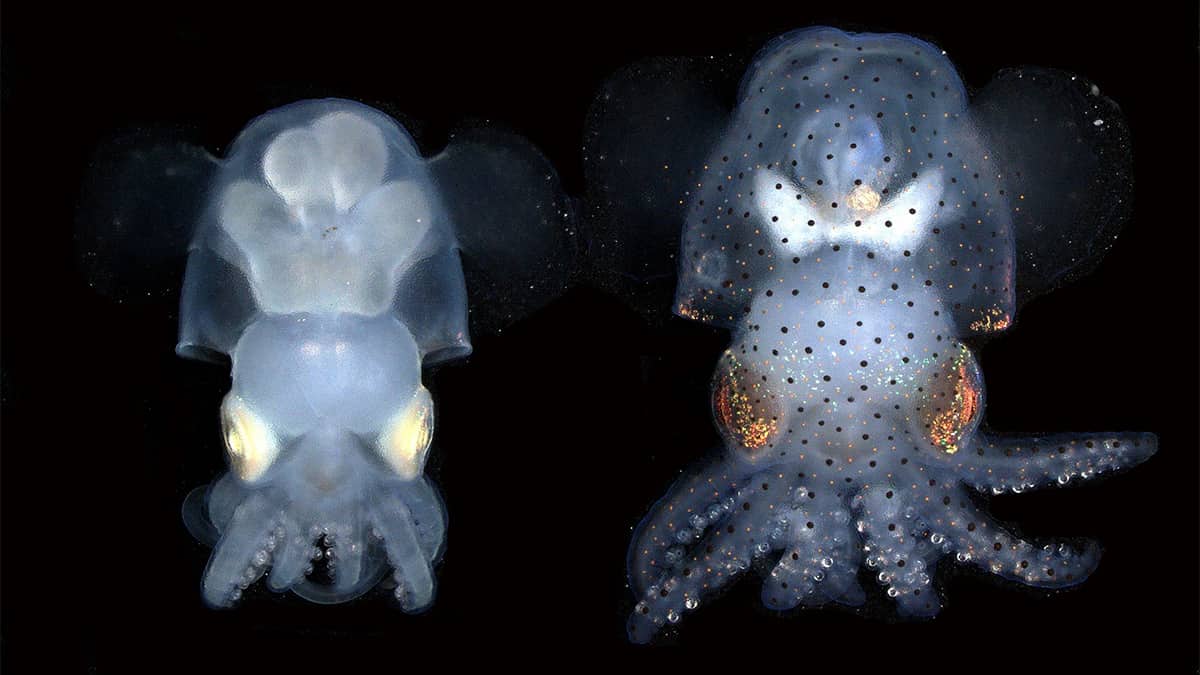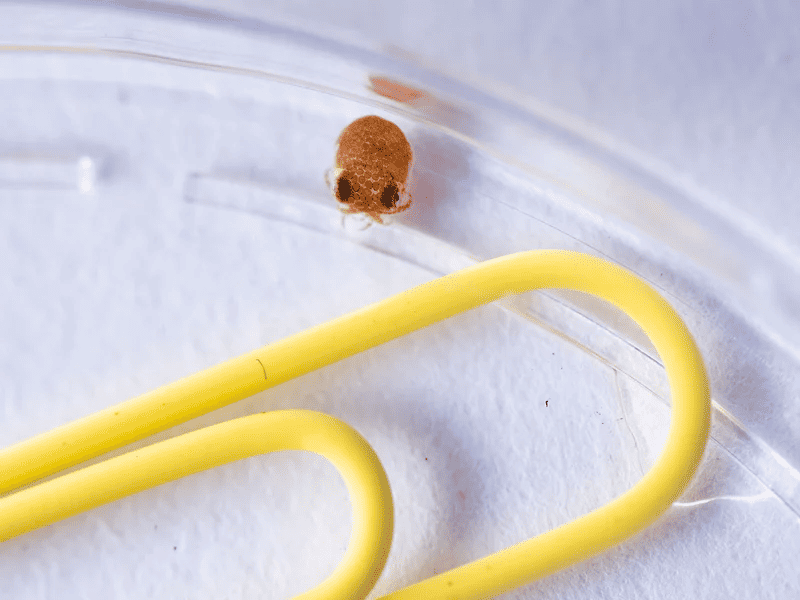Historically, turning invisible was considered the stuff of wizardry and spells. More recently, physicists have also looked at invisibility, devising invisibility cloaks with some remarkable science. But when biologists take a jab at invisibility, they do it differently: they use genetic engineering.
A team of researchers at the Marine Biological Laboratory in Woods Hole, Massachusetts, have successfully engineered a squid that is transparent — and they did it for a good reason.
Cute little transparent creatures

After undergoing this genetic change, these squid become extremely difficult to see. Even the scientists who look after them in an aquarium have trouble spotting them.
“They are so strikingly see-through. It changes the way you interpret what’s going on in this animal, being able to see completely through the body,” Caroline Albertin, one of the researchers behind the project told NPR.
Albertin worked with Joshua Rosenthal on the hummingbird bobtail squid (Euprymna berryi). This is a small squid that usually measures only around 3 centimeters (1.2 in). The squid is found in the Indo-Pacific area from Indonesia to the Philippines. Researchers chose this squid for genetic editing because it’s small (and easy to manage), thrives in aquariums, and is a prodigious breeder — all traits you want in this case.
Squids commonly camouflage themselves in their environment using specialized cells called chromatophores. These chromatophores are responsible for the color of a range of animals including amphibians, fish, reptiles, and cephalopods (the group that includes squids and octopuses). Mammals and birds don’t have chromatophores — they have cells called melanocytes for coloration.
The center of each chromatophore contains a sac full of pigment. Like a chameleon (arguably even more impressively), squids use chromatophores below the surface of the skin to change their color and mix with the surrounding environment.
Albertin and Rosenthal wanted to create a squid without any pigment — an albino.

They used a method called CRISPR to edit out a gene that was known to be linked with pigment in squids, but “nothing happened, ” Albertin told NPR. So they searched and found another gene that was related. When they knocked this one out, the resulting squids finally had no more color.
Why making transparent squids actually matters
The research opens up a completely different way to study cephalopods. Studying cephalopods is exciting because they’re very smart and their nervous systems are much more advanced than those of other invertebrates.
“There’s a whole lot of incredibly interesting biology surrounding cephalopods, unlike any other invertebrate,” says Rosenthal. “We now have a model cephalopod where we can interrogate biological function at a much higher resolution than before.”
Cephalopods can use tools and solve mazes and intricate tasks; they often learn by watching others, which hints at sophisticated intelligence. Even their instantaneous camouflage requires an advanced cognitive ability. However, studying them is difficult, and researchers haven’t really had model organisms for cephalopods.
A model organism is a non-human species that is extensively studied in the laboratory to understand particular biological processes. Research on model organisms often provides insights into how similar biological mechanisms work in other species, including humans. The fruit fly, zebrafish, and mouse are good examples of model organisms. This new transparent version of the bobtail squid could be just that.
For instance, co-authors Cris Niell at University of Oregon, Eugene, and Ivan Soltesz at Stanford University examined the albino squid’s brain activity by inserting a fluorescent dye into its optic lobe. The dye lights up every time it detects calcium (which the squid’s brain releases).
Then, with this setup, the researchers projected a series of images in front of the squid, causing its brain to light up and consequently, the dye to light up. With a normal squid, this doesn’t work because the skin pigment prevents the observation.
“The ability to directly and precisely test gene function in a model cephalopod is exciting because it makes it possible to study the features that make cephalopods special – and it will be an important tool for understanding many different aspects of their unique biology,” said co-author Albertin.
Researchers are now working to breed the transparent squids and distribute them to other labs studying cephalopods.
“We want to see these animals shared with the research community,” Rosenthal said. “Cephalopods contain treasure troves of biological novelty. We want to see people using them to ask thought-provoking questions and come up with novel findings.”
Journal Reference: Namrata Ahuja, et al (2023) Creation of an albino squid line by CRISPR-Cas9 and its application for in vivo functional imaging of neural activity. Current Biology, DOI: https://doi.org/10.1016/j.cub.2023.05.066






